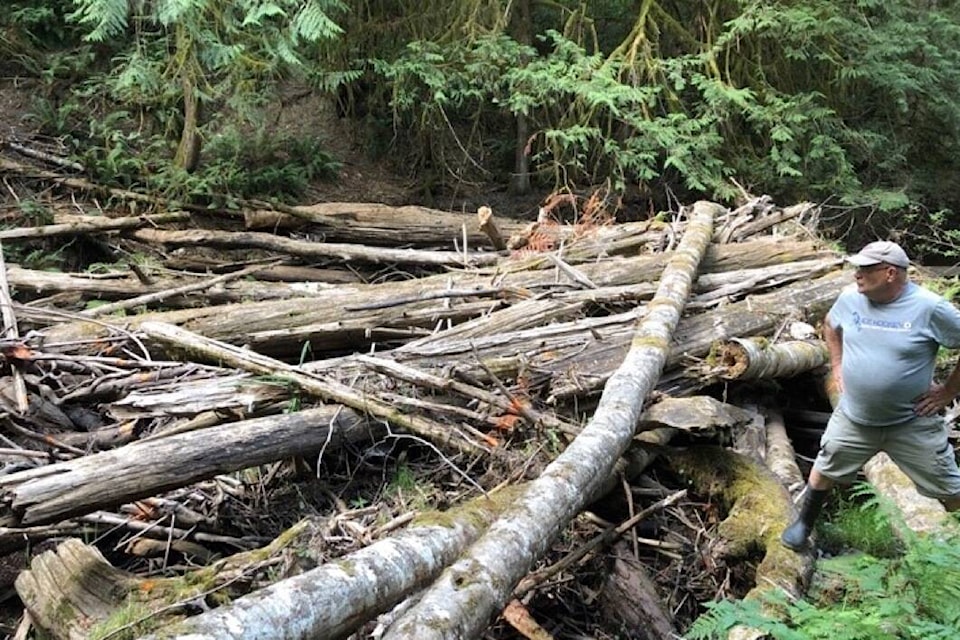With the fall season about to begin, the Mill Bay & District Conservation Society is hoping the efforts of its volunteers over the summer months to clear logjams to assist salmon get to their spawning grounds in Shawnigan Creek in the coming weeks will pay off.
Society member Bob Parent said that when the fall rains begin soon, it will trigger the annual arrival of Coho salmon coming home to spawn in the creek.
He said that last year, the Coho returns in the creek exceeded 7,300 fish during a seven-week window.
“This year, the many volunteers of the society, which is responsible for moving the salmon upstream past numerous impassable waterfalls in the lower reaches of the creek, are hoping for another banner year,” Parent said.
RELATED STORY: MILL BAY CONSERVATION GROUP MOVES THOUSANDS OF SALMON TO PRODUCE MILLIONS OF EGGS
Parent said access to adequate spawning grounds is a key component to increasing the size of the Coho returns in the creek, and the society has been working hard in recent months to improve access to those areas within the Shawnigan watershed.
“Using a drone flyover and boots on the ground surveying the length of the creek, numerous logjams were located and two very large and impassable barriers for spawning fish were removed, with the permission of the landowners, Department of Fisheries and Oceans and the Ministry of the Environment,” he said.
“The removal of these impassable barriers opened up the Campbell Park area, from Sonora Road to Cameron-Taggert Bridge, essentially doubling the prime spawning ground areas for the salmon.”
Parent said the society is extremely grateful to Kris and Nicole Carter for allowing heavy equipment to access their property and use their bridge over the creek to reach the logjams.
RELATED STORY: B.C. MAN DEVELOPING LESS HARMFUL WAY TO HARVEST SALMON SELECTIVELY
He said the Society would also like to express its gratitude to Reed Tanner Excavation Ltd. which supplied two large excavators and two talented operators that worked in tandem for two days to remove the logjams.
“Mr. David Clough [a riparian biologist] facilitated the permitting application that was needed for this removal to take place and supported, guided and assisted the team of volunteers on many aspects of stream remediation,” Parent said.
“The society is very thankful for his knowledge, patience and flexibility.”
Parent said two more large logjams will be dealt with next summer and that will add another 30 per cent of prime spawning grounds in the creek’s course.
“The watershed needs to be monitored by the property owners along the creek so that we can try and prevent logjams from rebuilding elsewhere,” he said.
“Stream restoration is expensive, complicated and often extremely difficult to achieve in both forest and wetland areas.”
Anyone interested to view or participate in the society’s efforts can visit its website at mbdcs.ca.
robert.barron@cowichanvalleycitizen.com
Like us on Facebook and follow us on Twitter
